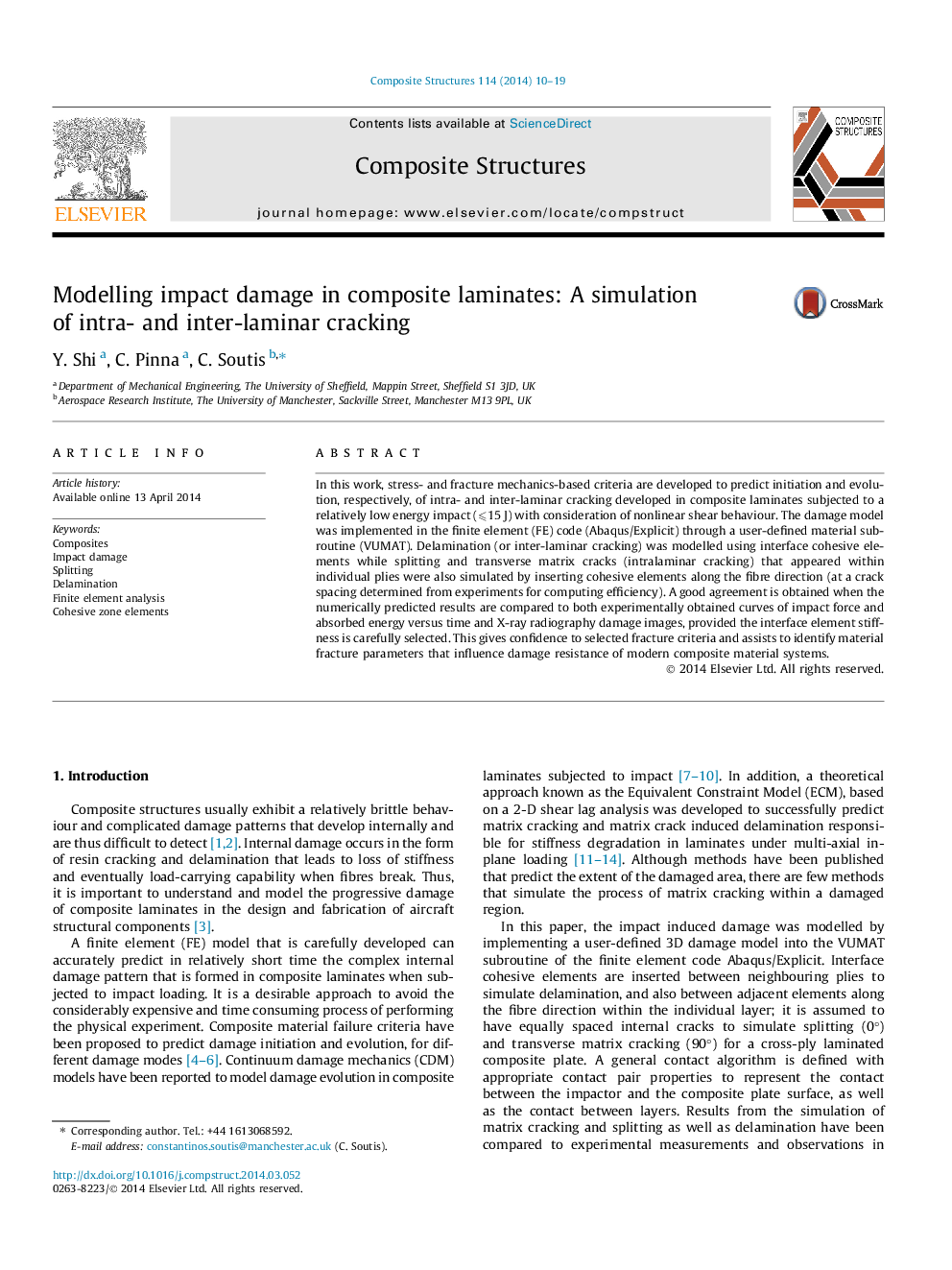| Article ID | Journal | Published Year | Pages | File Type |
|---|---|---|---|---|
| 251615 | Composite Structures | 2014 | 10 Pages |
In this work, stress- and fracture mechanics-based criteria are developed to predict initiation and evolution, respectively, of intra- and inter-laminar cracking developed in composite laminates subjected to a relatively low energy impact (⩽15 J) with consideration of nonlinear shear behaviour. The damage model was implemented in the finite element (FE) code (Abaqus/Explicit) through a user-defined material subroutine (VUMAT). Delamination (or inter-laminar cracking) was modelled using interface cohesive elements while splitting and transverse matrix cracks (intralaminar cracking) that appeared within individual plies were also simulated by inserting cohesive elements along the fibre direction (at a crack spacing determined from experiments for computing efficiency). A good agreement is obtained when the numerically predicted results are compared to both experimentally obtained curves of impact force and absorbed energy versus time and X-ray radiography damage images, provided the interface element stiffness is carefully selected. This gives confidence to selected fracture criteria and assists to identify material fracture parameters that influence damage resistance of modern composite material systems.
